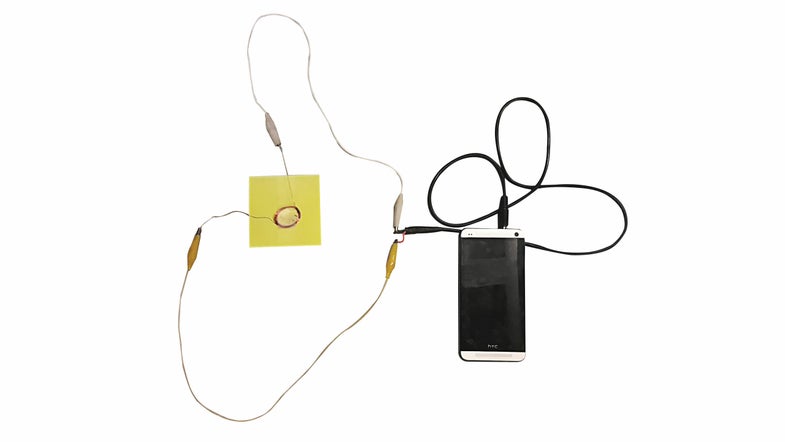How To Make Speakers From Post-Its
Harnessing the power of sound using office supplies

On the ground floor of Pioneer Works Center for Arts and Innovation in Brooklyn, New York, a bearded and flanneled trio played gloomy arrhythmic music one Wednesday night. Upstairs, director of education David Sheinkopf taught a class on the science of sound, including how to build a core technology behind the performance below: the electronic speaker. Popular Science sat in to learn about harnessing sound with a little DIY.
The Lesson Plan
In a speaker, an audio signal sends current through a coil, creating a magnetic field that yanks on a second magnet. This vibrates a diaphragm, sending sound waves through the air.
Students build stripped-down speakers from magnet wire, which coils up to form the electromagnet; a Post-It note, which acts as the diaphragm; and a rare-earth magnet taped to a tabletop.
Alligator clips attach the contraption to a speaker cable, which plugs into a cellphone to play music at a low volume. If you press your ear to the makeshift system, the quality is surprisingly good.
In addition to speakers, students learn the history of analog sound recording, from before Edison to beyond cassettes, and construct makeshift record players out of pins, pencils, and paper.
Stats
Time: 15 minutes
Cost: $4
Difficulty: 1/5
Tools
- Sandpaper
- Scissors
Materials
- 3 feet of magnet wire
- Tape
- Small rare-earth magnet
- 1 Post-It note
- Audio cable
- 2 alligator clip wires
Instructions
Sand the coating off both ends of the magnet wire, starting about 2 inches from each end.
Wind the magnet wire around your finger to form a neat coil. Leave about 3 inches on each end. Then slide it off, and secure the coil with tape.
Tape the rare-earth magnet to a flat surface, like a tabletop.
Attach the sticky note next to it, so that it forms a flap over the rare-earth magnet.
Tape the coiled wire in the middle of the sticky note.
Cut one of the ends off the audio cable. (Make sure the remaining end is the male plug.) Peel back the outer rubber to expose the two inner wires.
Attach each exposed wire to one end of the coiled wire with the alligator clips.
Plug the audio cable into your cell phone’s audio port, and play some music. Hold your ear over the coil to hear shockingly crisp sound.
This article was originally published in the February 2015 issue of Popular Science, under the title “Learn to Make Speakers from Post-Its”.